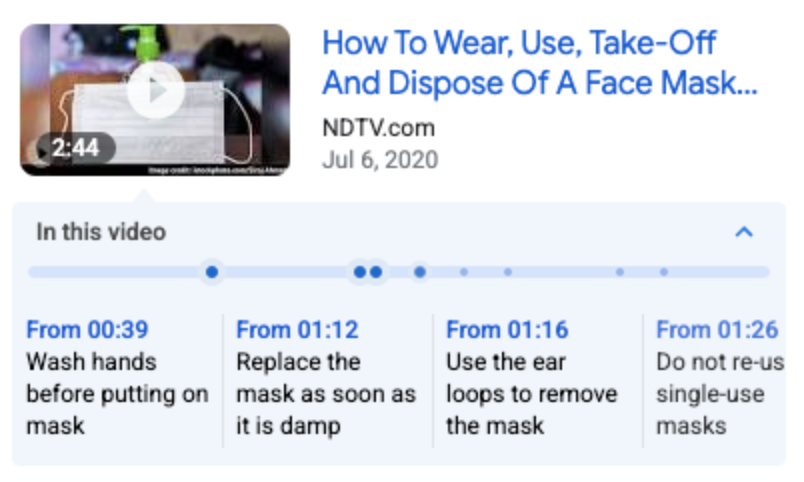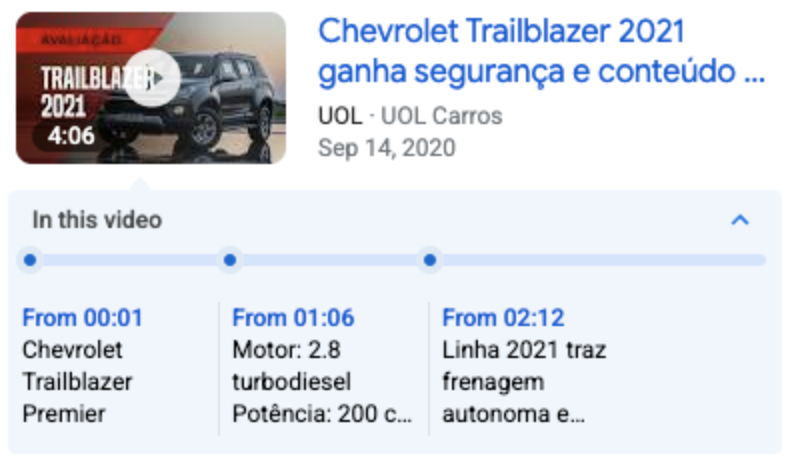2021 年 7 月 19 日,星期一
自 2019 年首次推出视频重要时刻功能以来,我们一直在不断地拓展和改进该功能。我们不断改进设计,并使该功能在所有可以使用 Google 搜索的地区内可用于更多视频(包括在移动设备和桌面设备上)。借助重要时刻功能,更多用户得以直接跳转到视频中最合乎其需求的片段,并且可像浏览图书章节那样便捷地在片段间跳转。
今天,我们推出了一种新方式,让您无需手动标记每个片段,就能为网站上的视频启用重要时刻功能。您只需告诉 Google 跳至视频中特定时间戳要使用的网址格式即可。然后,Google 会使用 AI 识别视频中的重要时刻,并在搜索结果中显示直接指向这些时刻的链接。


我们在 Google I/O 大会期间首次公布了 SeekToAction Beta 版测试;从今天起,此功能结束 Beta 版阶段,所有包含视频的网站都可以使用此标记。以下是实施此标记时需要注意的几点提示:
- 您的网址必须能够深层链接到视频起始点之外的某个时间点。例如,访问
https://www.example.com/example?t=30便可从视频的 30 秒处开始播放。 - 请在您希望 Google 自动识别重要时刻的每个视频页面上使用
SeekToAction标记,并遵守我们的其他指南。下面是一个详细示例。 - 为自动识别视频中的重要时刻,Google 必须能够提取视频内容文件。
请注意,SeekToAction 标记仅适用于您自己网站上嵌入的视频。如果您将视频发布到 schema.org 标记不由您掌控的第三方平台上,可以与相应平台联系,了解其是否支持此标记。
我们希望 SeekToAction 标记能让您更轻松、高效地启用重要时刻功能,并帮助用户更深入地与您的视频互动。如果您有任何疑问,请在论坛中发帖提问、通过在 Twitter 上 @googlesearchc 与我们联系,或者直接在我们的文档页面上提交反馈。
